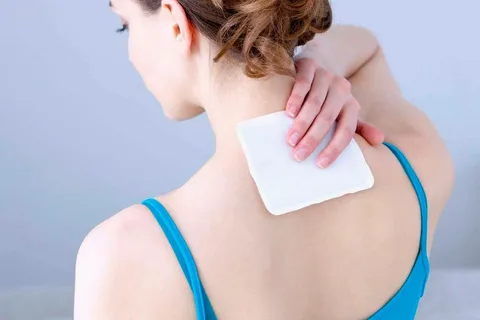Over the last few years, there has been a growing demand for noninvasive and drug-free pain relief solutions, allowing for TENS patches for pain, EMS gel pads, NMECS, and MCS gel, among others. On the contrary, these devices offer a different approach to pain management and rehabilitation of muscles and give users effective, personalized treatments that can be done at home. While EMS gel pads promote recovery and strength with muscle stimulation, TENS patches work to alleviate pain through electrical nerve stimulation. While MCS gels employ microcurrent therapy to accelerate tissue healing, NMECS combines both approaches, attacking the nerves and muscles for a complete solution. This article unravels the intricacies, advantages, and dissimilarities between these sophisticated pain management tools, illustrating their place in contemporary rehabilitation and pain alleviation.
1.How TENS patches work
The working principle of TENS patches is grounded in electrical nerve stimulation technology. When the TENS unit is turned on, the patches generate low-voltage electrical impulses through the skin. These currents activate the sensory nerves that interfere with the communication of pain messages to the brain. The electrical impulses emitted by the TENS patches can also trigger the release of endorphins- chemicals found in the brain that assist in the management of pain. The parameters of the electrical stimulation, that is, the intensity and the pulse frequency may also be fixed or changed depending on the user’s preferred level of stimulation to enable pain modulation. This makes TENS patches a useful device for the treatment of both short-term and long-term pain.
2.EMS Gel Pads: The synopsis of a complementary solution for stimulation of muscle activities
EMS (Electrical Muscle Stimulation) gel pads are also great tools applied for treatment of the pain and muscle buildup. These pads function by sending electrical stimulations to the muscle tissue that excites the individual muscle fibers meaning they contract and relax. The stimulation is similar to muscle contraction and relaxation, helping the patient to prevent muscle atrophy and increase blood flow and painful tissue stiffness. EMS gel pads are well known by physiotherapists who use them during the treatment of injuries and by athletes who use them, to increase muscle strength and endurance. EMS gel pads are known to help improve muscle tone, help muscles recover faster and reduce muscle aches and cramps when used properly.
3.TENS vs EMS
TENS patch and EMS gel pad are electrical muscular stimulating yielding gadgets that work differently while bestowing comfort and alleviating pain. TENS patches are mainly used to address pain because they prevent pain messages from being sent to the brain. Its objective is to limit pain arising from diseases like arthritis, back issues, and nerve injuries. Unlike EMS gel pads, deeper muscle stimulation is centred on EMS gel pads to help in muscle relaxation and their vigorous contraction force. They are widely applied in rehabilitation programs for helping people with injuries or for enhancing muscle strength. Both devices employ electrical impulses to deliver stimulation, however, the stimulation that is offered is different: while TENS works with receptors of the nerves, EMS works with fibres of the muscles.
4.The Role of NMECS in pain management
It is important to note that NMECS, Neuromuscular Electrical Stimulation, is a form of electrical stimulation that is a mix of both TENS and EMS. NMECS devices are more specialized and are capable of targeting the nerves and muscles for better pain management and muscle relaxation. Physical therapy and rehabilitation settings often employ NMECS technology to treat muscle weakness, increase circulation, and decrease pain. NMECS can also stimulate the muscles to prevent atrophy and assist in faster recovery after surgery or injury. This can be especially beneficial for people with both chronic pain and muscle dysfunction, providing a more holistic approach to treatment.
5.MCS gels for pain relief and muscle recovery
In the realm of electrical stimulation for pain relief, MCS (Microcurrent Stimulation) gels are another option. Typically, these gels are used with devices that pass microcurrents, or low-level electrical impulses, that range in amperage up to one millionth. MCS gels work by promoting cellular healing and inflammation reduction at the pain or injury site. Usually, these gels are applied in physical therapy sessions to help make microcurrent therapy more effective. MCS gels can provide electrical stimulation that can stimulate tissue repair, improve circulation and relieve muscle spasms, making them a valuable tool for athletes recovering from soft tissue injuries or in any patient who has chronic pain.
6.Advantages of using TENS patches, EMS Gel pads, NMECS and MCS gels
Individuals with pain or undergoing rehabilitation can benefit from the use of TENS patches, EMS gel pads, NMECS and MCS gels. These are noninvasive, drug-free alternatives to traditional pain management. Offering a convenient and effective solution to individuals who need help with chronic pain or muscle stiffness, they can be used at home. In addition, these technologies are often customizable with adjustability settings for setting parameters to the specific needs of the user. Pain relief and muscle stimulation together allow the overall function and mobility to improve and make these devices excellent tools for both acute and chronic conditions. Additionally, such devices may help reduce pain medication use and thus lead to a safer, more natural pain management option.
7.Pain management and rehabilitation technologies: Future trends
The future of pain management and rehabilitation is most likely to be seen with advancements in TENS, EMS, NMECS, and MCS gels as demand continues to rise for non-invasive and drug-free solutions. Current research and innovation in electrical stimulation devices strive to enhance their effectiveness, precision, and user experience. For instance, advances in wearable technology, such as more portable and discreet devices, make it easier for people to incorporate these treatments into their daily routines. In addition, artificial intelligence and machine learning could be integrated for more personalized pain management strategies that adjust stimulation parameters in real-time for optimized outcomes.
With increasing demand for non-invasive and drug-free pain management solutions, TENS patches, EMS gel pads, NMECS and MCS gels are likely to see widespread use. Ranging from the cutting-edge to the emerging, these technologies are poised to usher in a new era of pain management and rehabilitation, for patients, delivering a more natural and holistic approach to treatment. As technology continues to advance, these devices improve, becoming even more precise and effective in the treatment they serve. These electrical stimulation tools are used for pain relief, and recovery from injuries, as well as enhancing muscle function, and they provide a valuable alternative to traditional pain relief methods. With the growth in research into their efficacy, the future for TENS patches, EMS gel pads, NMECS, and MCS gels holds promise for enhanced pain relief and rehabilitation.












